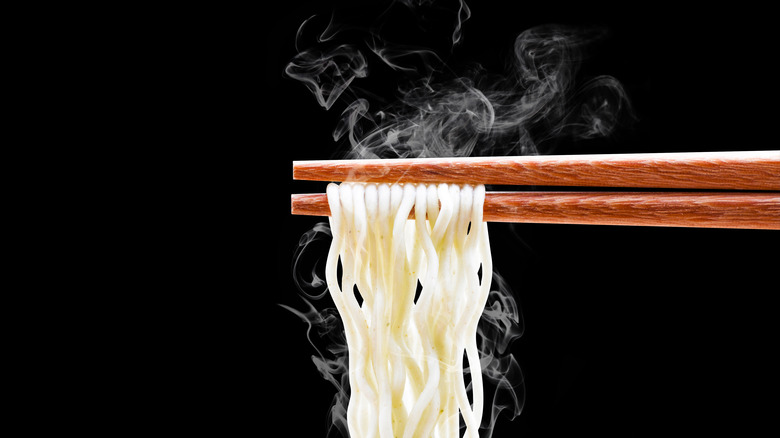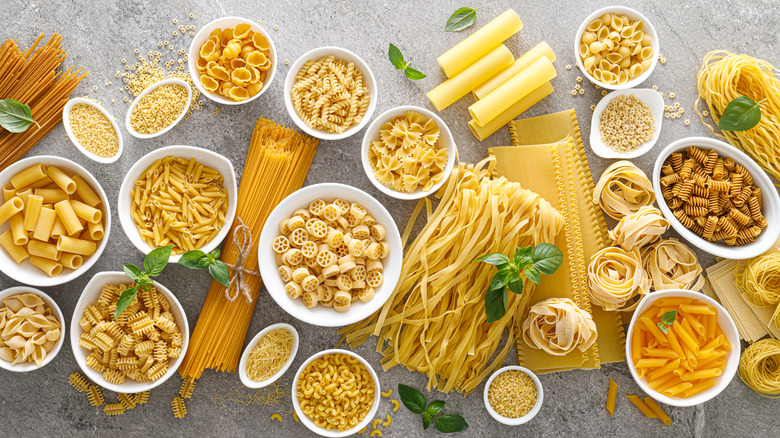The Subtle Differences Between Noodles And Pasta
Same, but different — that's the best way to describe the relationship between noodles and pasta. These carb-filled comfort foods originated in different parts of the world, and though they bear some resemblance, noodles and pasta are made with different ingredients, using different methods, and are generally served in different recipes (via Impastiamo).
When you think of noodles, you might be thinking of stringy deliciousness like ramen, but noodles can come in all sorts of varieties. They can be hand-cut, peeled, pulled, or kneaded — some styles are even over 4,000 years old, according to Eat This, Not That!. Pasta has over 600 different shapes, as recorded by Share the Pasta, with an assortment of names and origins and functions (some are meant to scoop up meatier sauces, while other pasta noodles are better with lighter accompaniments). In addition to these variations, you might be surprised to learn these two starchy dishes undergo distinct production processes.
Comfort produced in many forms
Noodles and pasta are made from different ingredients and both go through a unique process. Chef at North Italia, Chris Barch, told Eat This, Not That!, "Italian pasta essentially has two main pasta doughs: egg dough and non-egg dough." Pasta dough, according to the National Pasta Association, was traditionally made from durum wheat, but now it is possible to buy gluten-free and wheat-free pasta in stores. Noodle dough, on the other hand, can be made from buckwheat, eggs, rice, or flour (via PEDIAA). Noodles aren't linked to any one particular ingredient — you can even find yam, seaweed, root vegetables, tapioca flour, mung bean, and pea starch noodles on shelves (via Nona Lim).
To make noodles, dough is passed through rollers and the flat sheet is cut. Pasta dough, however, is generally not sliced but pushed through molds, reports Country Guide. Salt is another important differentiator — salt helps the gluten of noodles come together, but traditional pasta is salt-free (via Lacademie).
Lastly, you probably have noticed how noodles and pastas are served. Pasta is typically boiled and coated in some sort of sauce — think the simple Bucatini Cacio e Pepe Pasta or the more nuanced Penne Pasta with Spicy Arrabiata Sauce. Noodles, on the other hand, can be prepared in miso broths or fried. No matter where you are in the world, there's a good chance you can find both pasta and noodles to serve at tonight's dinner.

